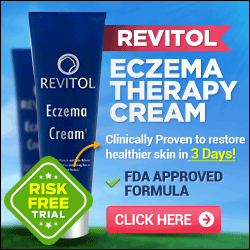Skin Care
Skin Types
Dry
Oily
Combination
Sensitive
Conditions
Eczema
Part I
Psoriasis
Rosacea
Cellulite
Aging and Wrinkles
Sun Protection
Introduction
Maximum
Factor
Tanning and Burning
Other
Babies
Women
Men
Winter and Summer
Natural Ingredients
|
Skin Disorders – Eczema - Forms of Eczema
  Let's take a closer look at some of the more common forms of eczema. Let's take a closer look at some of the more common forms of eczema.
Atopic eczema is associated with a family history of allergies. It's considered an inherited form of eczema since the majority of people with atopic eczema themselves have problems with allergies or they have relatives who suffer from allergies, asthma or hay fever. Atopic eczema usually first appears during infancy and it flares and subsides regularly throughout life.
Seborrheic eczema is very often misdiagnosed as 'dry skin'. This common type of eczema is not at all associated with dry skin. It's actually believed to be somehow related to genetics, although the relationship has yet to be defined. The symptoms of seborrheic eczema include scaly skin that usually appears on top of the head and around the eyebrows, ears and nose, however, it can also appear on the chest.
It seems to be a skin condition that more often affects men than women and it doesn't usually become a problem until after puberty. After that however, seborrheic eczema flares frequently. Interestingly, it also appears in patients with some forms of mental or neurological issues such as mental retardation and Parkinson's disease.
To treat seborrheic eczema on the head, wash daily with shampoo that contains tar, salicylic acid, sulfur or selenium. For skin, apply hydrocortisone cream. Systemic antibiotics are sometimes prescribed as well.
Cradle cap is a form of seborrheic eczema that affects infants. It's easy to diagnose by the appearance of patches of thick, yellowish scales atop an infant's head. It sometimes appears in the diaper area, neck, face and behind ears, too. It's harmless and goes away quickly when treated. Use shampoo formulated for infants, then after shampooing, lightly massage and brush scalp with a soft brush. If it doesn't improve, it's important to seek medical advice.
Varicose eczema is caused by poor circulation usually due to obesity, menopause and pregnancy. This type of eczema most often appears on the lower leg area around the ankles. Symptoms don't usually appear until mid-life. It's important to treat this type of eczema otherwise the affected areas of skin could break down and form ulcers. Steroid creams and emollients are effective treatments.
The discoid type of eczema is characterized by round patches the size of coins appearing on the lower part of the legs, arms and the trunk. The patches are itchy and they sometimes weep. Discoid eczema seems to have no apparent trigger and usually develops suddenly and mostly in older men.
Contact dermatitis is another form of eczema that develops when irritants come into contact with skin. It results in localized inflammation in the area where contact occurred. It results from exposure to toxic chemicals rather than allergens, either just once or after several such contacts. A one-time exposure, usually to highly toxic chemicals, is considered an acute case and can cause red, thick, scaly skin.
A cumulative case is far more common and results from repeated exposure to any number of milder irritants such as laundry detergents, soap and even urine or saliva. Continual exposure only prolongs the problem. Dry, red skin that is thick and cracks and sometimes has papules is the result of this form of eczema, which is also hard to treat.
|

